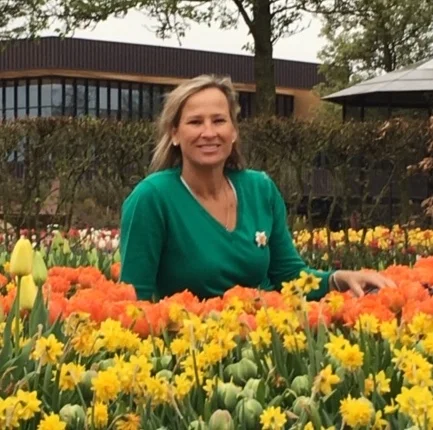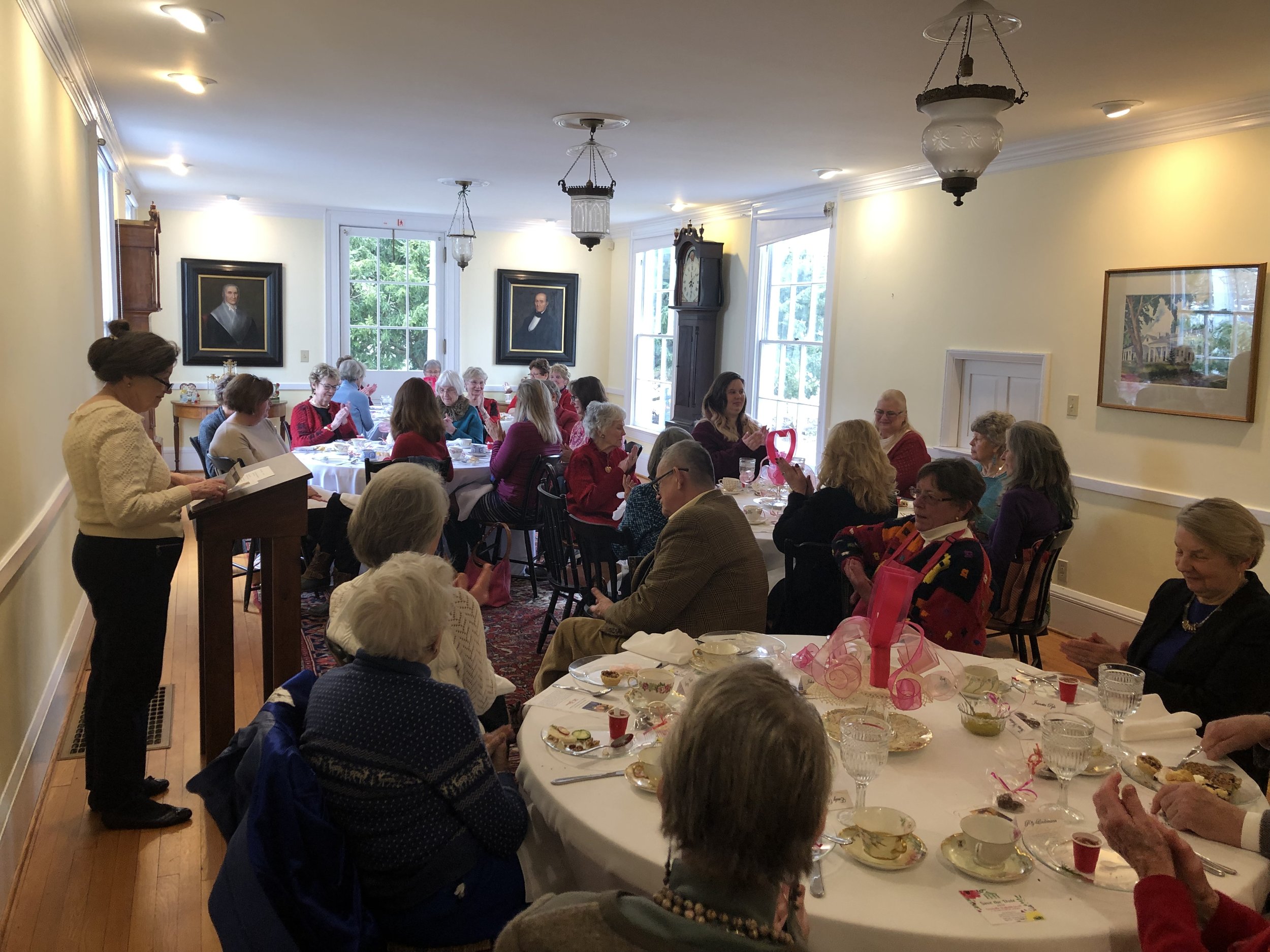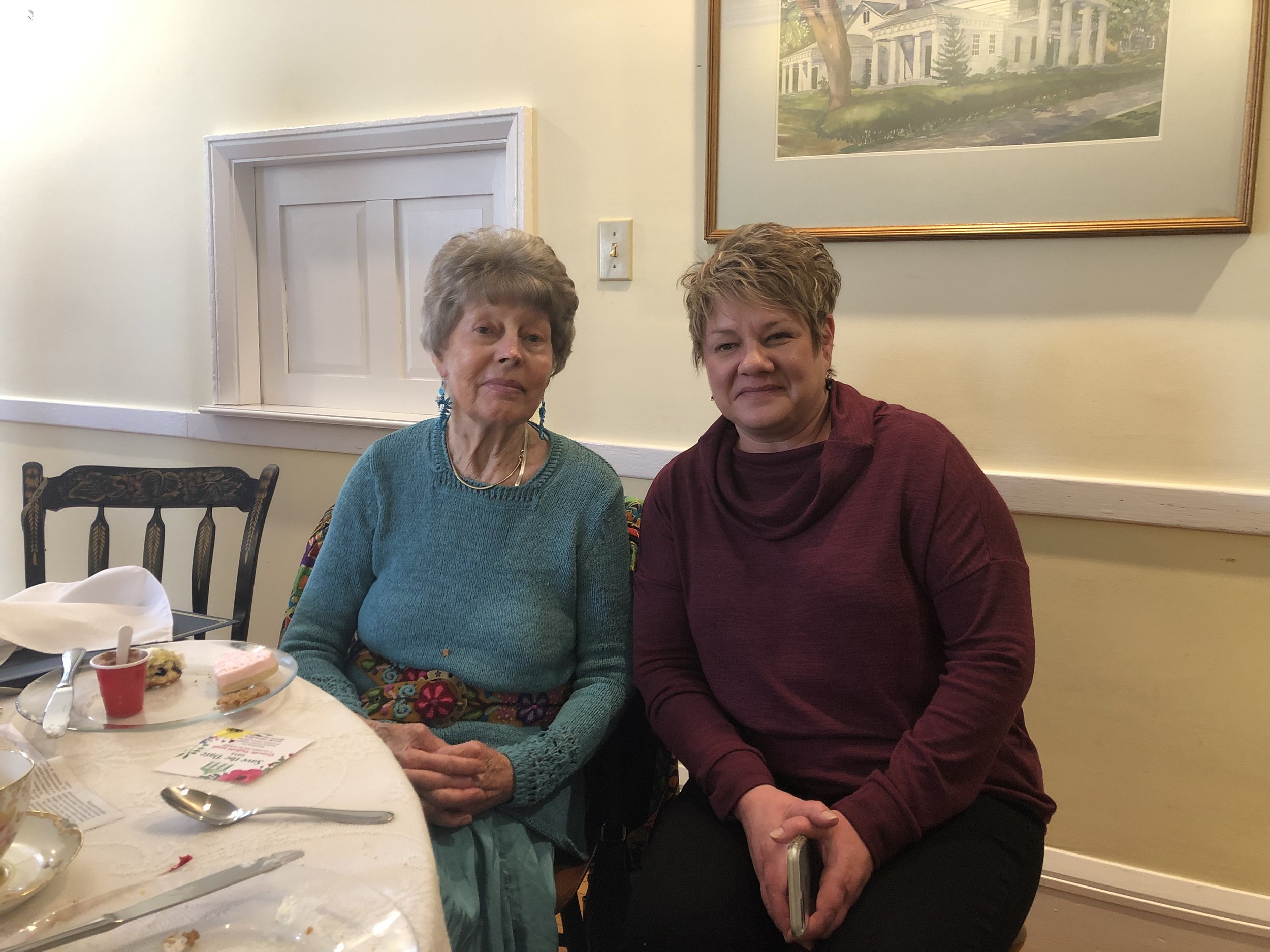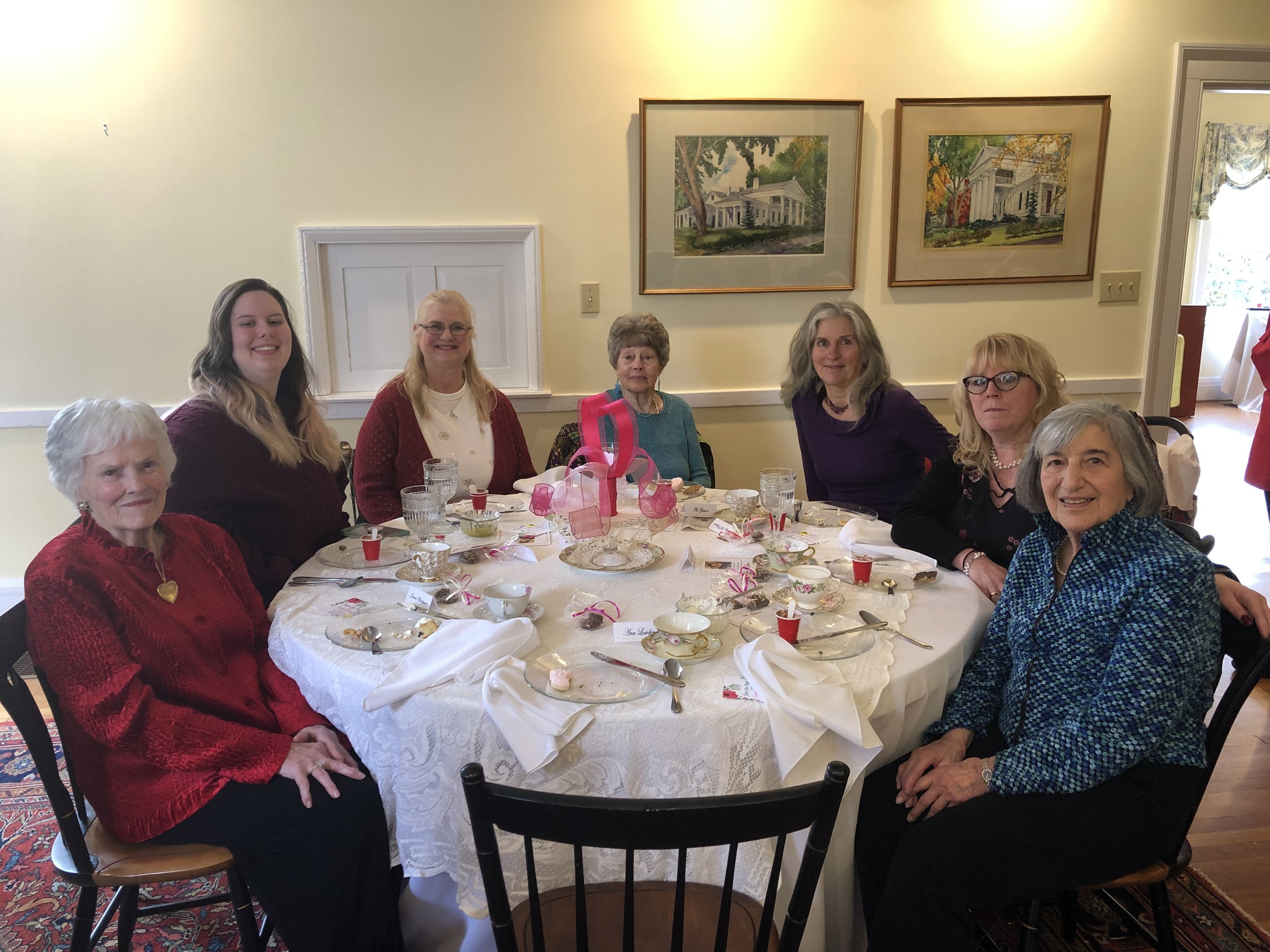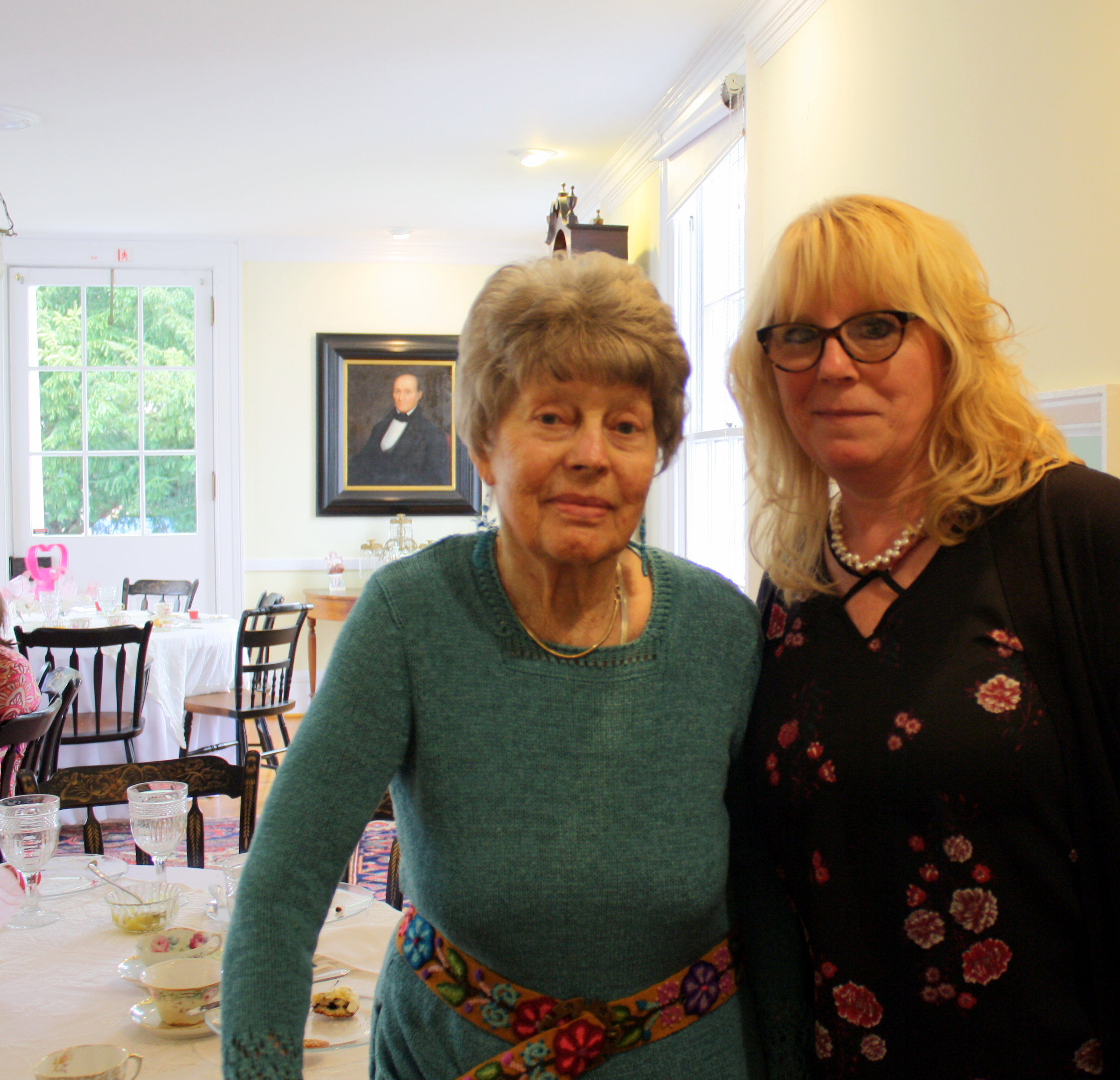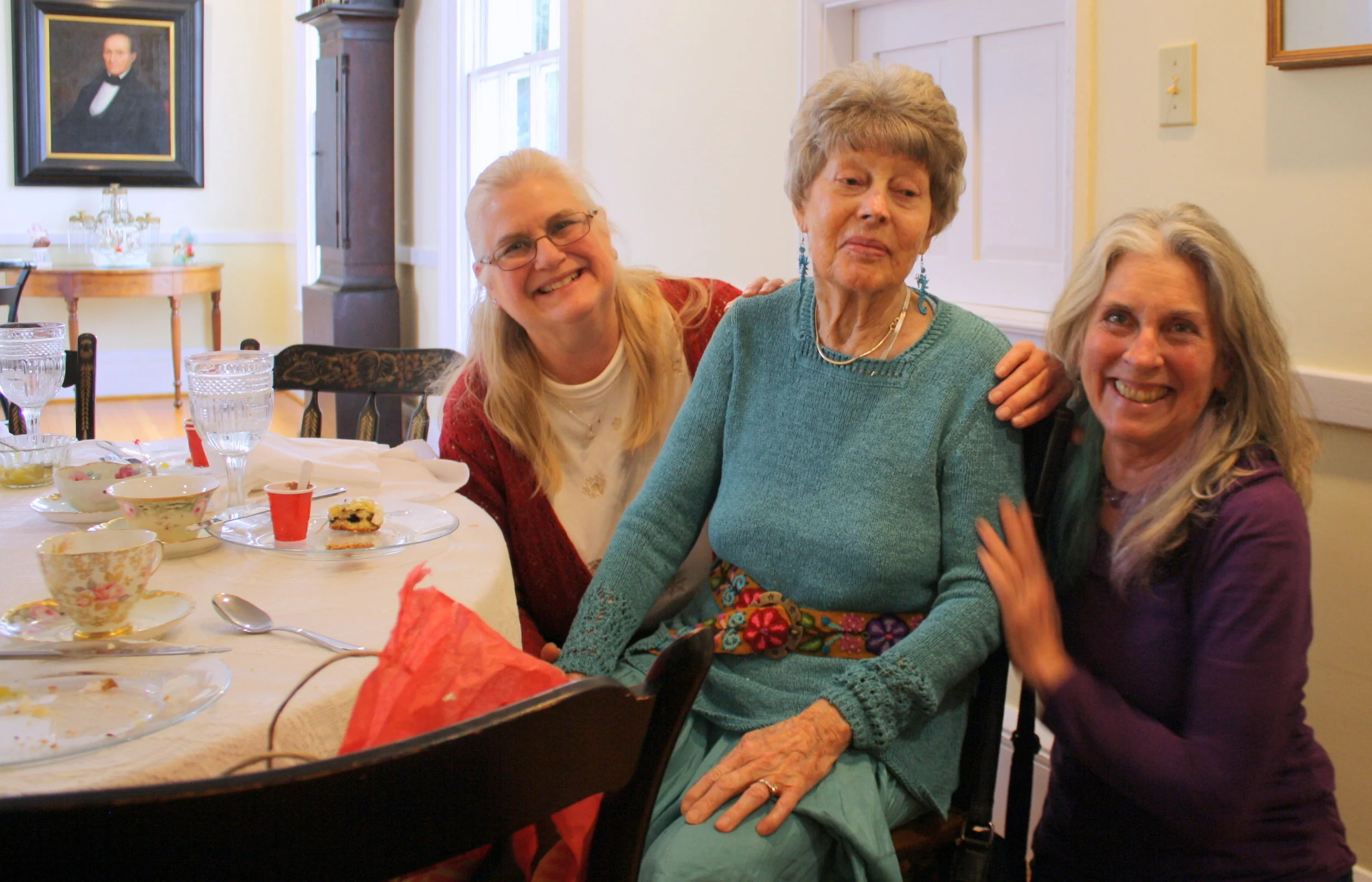“There’s something about peacefulness and connection one feels in a garden,” says Holly Shai, this year’s chairperson for the biennial garden tour, sponsored by Robbins Hunter Museum. “The garden brings serenity to me and I want others to feel the emotions I get when I’m in the garden.”
Holly Griesse Shai chairs the Granville Daffodil Stroll this year and as you can see, she loves flowers, especially Daffodils!
Shai, as chairperson of this year’s tour, is pleased to announce the “Granville Daffodil Stroll, A Celebration of Spring,” a tour of selected gardens in Granville, is set for Saturday, April 27, from 9 a.m. - 4 p.m., with a Patron Party on Friday, April 26, the evening before. This year’s tour is scheduled two weeks after the popular Granville Daffodil Show, setting the stage for more Daffodil viewing as they grow and bloom in the natural settings of village gardens.
Past garden tours have taken place in the summer. This year, Shai says, the event will be a celebration of spring. “Everything is so hopeful in the spring,” she says. “It’s a good time for enjoying our local gardens, especially with the popularity of the Daffodil flower here in Granville. It will be fun to see them blooming in gardens.”
Five gardens are on tap for touring, from those professionally designed to those that are homeowner labors of love. Shai’s own garden will be included, where visitors are invited to stroll her hybrid garden of rhododendrons and azaleas. “We’re now 24 years into our garden,” Shai says of the gardens on the 26-acre property, “and each year my husband, Park, and I add something new.”
A statue stands in the Shai garden, as seen at the 2017 Granville Garden Tour.
The weekend kicks off with the Patron Party on Friday, April 26, at 6 p.m. at the Museum, a pre-tour event open to the public. Tickets are $75 and include one ticket to the garden tour the next day, food, beverages and lots of socializing. As tour day dawns, volunteers gear up to sell tickets and be on hand at tour gardens to welcome visitors.
The tour, in its 3rd year and the largest fund raiser for RHM, attracts more than 450 people. Tickets at $25 each can be purchased on line HERE or at the door of the museum anytime during tour day. The event is rain or shine. All proceeds support on the ongoing development and maintenance of the Jill Griesse Historic Garden on the grounds of the Avery-Downer House, the home of the museum, which just this last year earned the notable distinction of being placed on the National Registration for the American Daffodil Society. Shai is the daughter of Paul and the late Jill Griesse. Jill is noted for her vast Daffodil gardens, and for leadership on the national level as the chairperson for the Chicago and Columbus Conventions of the ADS. The Griesse Historic Garden at RHM, which features many of the special Daffodils moved from her mother’s garden, is a gem for Granville, Shai says. “And it’s open 365 days a year.”
Shai is quick to say she owes much of her love and commitment to gardening to her mother. “It was a chore to weed, water and help my mother maintain the garden when I was a kid, “ she remembers, “but as an adult when I planted my first bulbs and they grew and bloomed, I was so proud of myself for having done it on my own.”
That first small success turned into a lifetime of gardening and it is that love of planting, growing and blooming she hopes visitors to the Granville Daffodil Stroll will feel when they enter those backyard spaces of beauty and tranquility.
Help Holly make this celebration of the gardens a resounding success! Support the RHM Garden Tour with your sponsorship at one of four levels:
Daffodil $2,500
Your name and logo on the RHM donor wall and sponsor’s board, with six complimentary tickets to the party and tour.
Bouquet $1,000
Your name and logo on the RHM donor wall and sponsor’s board, with four complimentary passes to the party and tour.
Blossom $500
Your name and logo on the RHM donor wall and sponsor’s board, with two complimentary passes for the party and tour.
Bulb $250
Your name and logo on the RHM donor wall and sponsor’s board, with 2 tickets for the tour.
All gifts are IRS tax deductible and the Robbins Hunter Museum is a 501 (c)3 nonprofit organization. Make your donation with payment to RHM, PO Box 183, Granville, 43023 or click HERE to complete your donation online. All proceeds support the Jill Griesse Historic Garden.



